The application period has closed.
Grant announcements were made in July 2023.
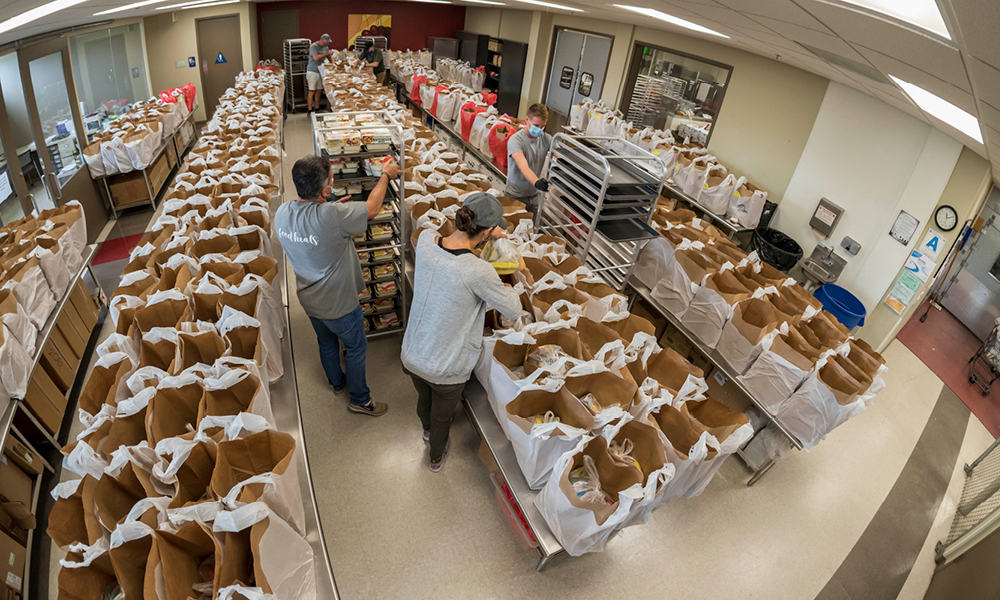
Background
The COVID-19 public health crisis dramatically impacted our food system, exposing inequalities and the need for greater resilience.
As estimated by the San Diego Hunger Coalition, approximately 28% of San Diegans were experiencing nutrition insecurity as of March 2022. Black, Indigenous and people of color have been disproportionately impacted, and nutrition insecurity remains highest among communities of color, Food- and nutrition-insecure neighborhoods throughout San Diego County have limited access to healthy food and limited agency over their food environment.
As established by the San Diego County Board of Supervisors, the County of San Diego (County) has contracted San Diego Foundation (SDF) to disseminate American Rescue Plan Act funds to support a wide range of community-led projects with the intended purpose of increasing food sovereignty, especially in low-income communities and communities with limited access, through food production, processing, and distribution.
These projects support the region’s most vulnerable communities, specifically those who have been disproportionately impacted by the COVID-19 pandemic, by addressing issues of food insecurity, improving nutrition, and access to locally grown food.
To achieve this purpose, we are working to support organizations and networks that are directly informed by and accountable to the communities they serve, providing opportunities for capacity building, technical assistance, and capital investments to deepen and sustain their impact in the County.
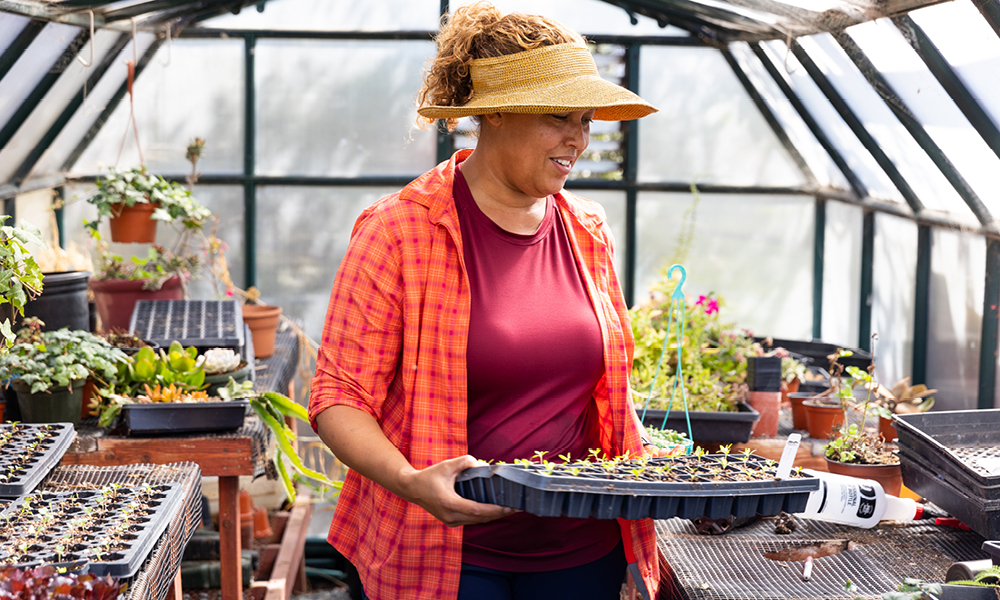
Funding Opportunity
In partnership with the County’s Public Health Services, SDF will award funding to new and existing community food projects to improve community food security including food production, processing and distribution projects across San Diego County to increase food sovereignty, especially in low-income communities and communities with limited access. The Community Food Grant Program will build regional capacity for community-based, grassroots organizations by investing in long-term solutions to empower community choice and food sovereignty. It is informed by broad community engagement and the guidance of an Advisory Council comprised of local food system community leaders. Based on needs expressed in applications received, we will assess opportunities to provide Technical Assistance (TA) to support funded partner organizations in building capacity and expanding sustainability in alignment with their funded project.
The Community Food Grant Program grant will award approximately $4.5 million. Grant amounts may range from $5,000 to $250,000.
Community food initiatives include all efforts to grow, raise and harvest crops, fish, or forage food, process these products and distribute them for human consumption. Examples of the types of projects that fall under this definition include, but are not limited to increasing:
- Community gardens and food forests,
- Agriculture in urban settings,
- Opportunities for consumers to purchase directly from growers or farmers and fisherfolk,
- Infrastructure for food processing and distribution, and
- Education opportunities around food and farming.
These efforts contribute to building resilient communities, a pillar of SDF’s Strategic Plan, by addressing equity barriers and creating a more inclusive and accessible food system for all.
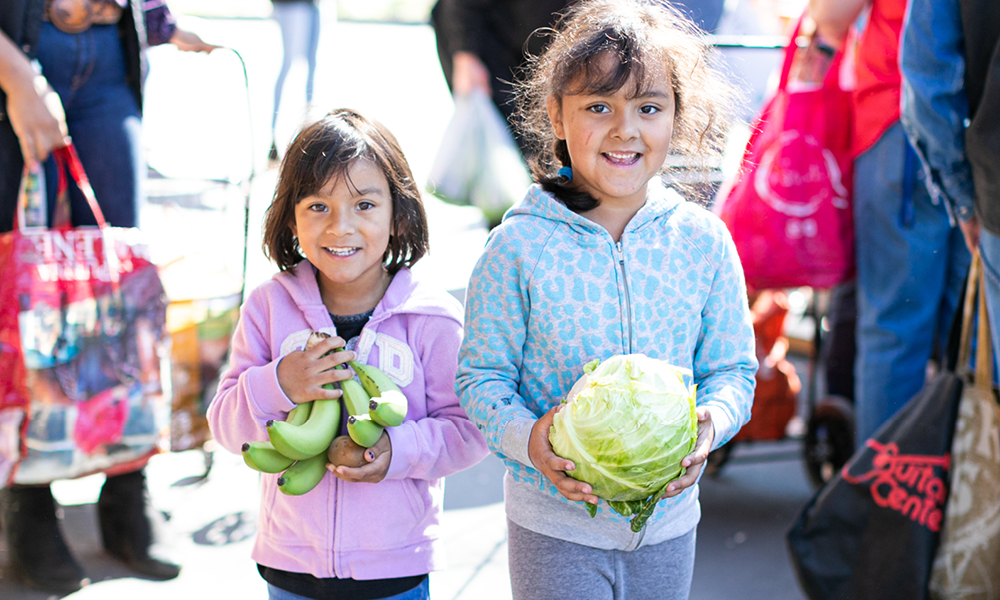
Grant Purpose
For the spring 2023 Community Food Grant Program cycle, SDF will fund projects that clearly contribute to the goal of supporting the region’s most vulnerable communities, specifically those who have been disproportionately impacted by the COVID-19 pandemic.
The following priorities and goals were identified as part of the robust community engagement sessions (more information in English and Spanish) hosted by SDF and the County of San Diego in fall 2022 that included residents, business owners, nonprofit leaders and community organizers from across the many sectors that comprise our local food system. Additional feedback, including an active role in community engagement, data collection, outreach, and input into building the grant guidelines, was also provided by Advisory Council members with:
- Bayside Community Center
- Coastal Roots Farm
- Ecolife Conservation
- Good Neighbor Gardens
- Lemon Grove Community Garden
- Maat Hetemii
- MAKE Projects
- Olivewood Gardens
- Project New Village
- San Diego Food System Alliance
- SDUSD Farm to School
- SunCoast Market Co-op
- San Diego Fishermen’s Working Group
- University of California Agriculture & Natural Resources
- UCSD Center for Community Health
The success of this project depends on reciprocal relationships between SDF and community partners with deep connections within San Diego’s food system.
This grant program addresses community informed priorities, including:
- Increasing food sovereignty and community resiliency through projects that empower community choice through localized production, processing and distribution.
- Supporting community-based, grassroots organizations to increase and sustainably expand food production through capacity building, technical assistance and capital investments.
- Fostering collaboration and providing technical assistance to build resilience and promote equitable access to resources and support for navigating regulations.
- Growing existing programming to mobilize funding and promote systems change.
The goals of this grant program are to:
- Strengthen and scale community-led strategies to address food and nutrition insecurity with local solutions.
- Build collaboration and support among local communities to share learnings, best practices and expand networks.
- Improve community food environments, as described in the San Diego County Food Vision 2030, to increase access to healthy food and encourage local food production across low-income communities and communities of color.
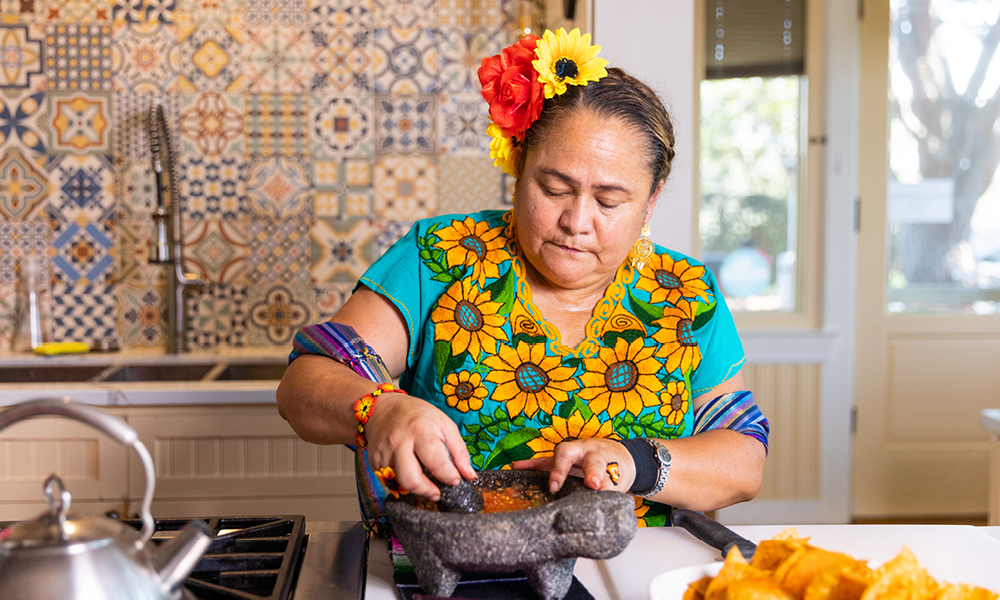
Grant Eligibility & Use of Funds
SDF will award approximately $4.5 million in funding support. Grants are expected to range from $5,000 to $250,000 per year. All funding must be expended by December 31, 2024.
Project Eligibility
- Each proposal must be led by a nonprofit with 501(c)(3) public charity status or an equivalent tax-exempt status, located in and serving San Diego County communities.
- Entities eligible to receive a grant with equivalent tax-exempt status can include government entities such as State, County, tribal or municipal governmental units, churches providing charitable programs, and educational institutions such as public schools (districts), colleges and universities that are considered government.
- A 501(c)(3) public charity may serve as a fiscal sponsor for another applicant to administer the grant and provide regular financial reporting to San Diego Foundation.
- Any organization may be part of more than one proposal but may only serve as the lead applicant for one proposal.
- We will not fund individuals, endowments, existing obligations/debt, scholarships, or projects that promote religious or political doctrine.
Qualified Census Tracts
- The primary eligibility qualifier is that proposed projects must be located within ½ mile of qualifying census tract (QCT)
For projects that do not meet the geographic eligibility requirements (e.g., are not located in a qualifying census tract), projects need to entirely serve populations who meet one of the Disproportionately Impacted Demographic Criteria (set by U.S. Department of the Treasury). Project beneficiaries/participants must:
- reside in HUD or HPI Least Healthy Quartiles and/or,
- participate in qualified Federal Programs and/or,
- be considered Low-Income and/or
- receive services provided by Tribal governments
Please review the following definitions to confirm you meet these criteria:
| Criteria | Definition |
|---|---|
Qualified Census Tracts |
|
| Low-income households and communities |
|
| Households that qualify for certain Federal Programs | Qualifying Federal Programs from ARPA:
|
Use of Funds
Grant funds may be used for personnel, supplies, equipment, capital purchases, administrative or indirect costs, and any other program cost tied to effectively executing the proposed program.
Indirect costs are overhead expenses incurred by the applicant organization as a result of the project but that are not easily identified with the specific project. Generally, indirect costs are defined as administrative or other expenses that are not directly allocable to a particular activity or project; rather they are related to overall general operations and are shared among projects and/or functions. Examples include executive oversight, accounting, grants management, legal expenses, utilities, technology support, and facility maintenance.
In the case that the applicant has a Negotiated Indirect Cost Rate Agreement (NICRA), SDF shall allow the documented NICRA in their project budget.
In the case that the applicant does not have a documented indirect cost rate, the applicant may use the 10% de minimis indirect cost rate for project expenses supported by this grant.

Partnerships & Collaboration
We believe that intentional, strategic partnerships can be essential to maximizing the impact and value of this funding.
We will prioritize applications with thoughtful collaborations and partnerships in place. Organizations may collaborate in multiple projects, but may only be the project lead for one application. One organization will need to serve as the project lead for the purposes of submitting and managing the grant. Projects must clearly demonstrate in the application how the collaboration and/or partnership roles will be complementary and additive.
We strongly encourage you to list all collaborators and their roles even if they will not receive funding as part of the proposed project.
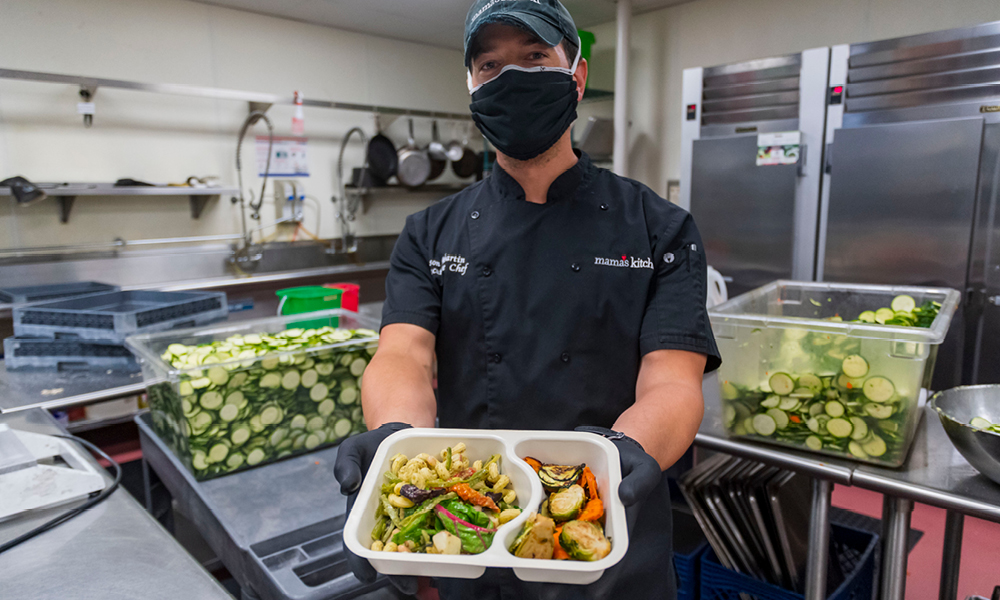
How To Apply
For 2023, SDF has introduced a new grant application portal to submit your grant application(s).
Whether you have submitted an SDF grant application in previous years or not, all nonprofit applicants are required to create a new user account to submit your Community Food Grant Program application for the Spring 2023 grant cycle. After creating your account, click the “Apply” button to access the application. For additional guidance regarding creating a new user account, please see this tutorial.
Application Deadline: Friday, March 31, 2023 at 5:00 p.m. PST
Pre-Recorded Grantseekers Forum
A prerecorded overview of the grant guidelines and application questions is available in English and Spanish. If you have a question that is not answered in the pre-recorded forum, submit your question online in English or Spanish.
Application
To review the application questions in advance of creating an account in the grant application portal, you may see a PDF of the application in the following languages: Arabic, Chinese (Simplified), English, Filipino, Korean, Persian, Somali, Spanish, Vietnamese. Please note we will only accept applications submitted through the grant application portal linked above.

Application Process
A timeline for the grant cycle with important dates is outlined below. San Diego Foundation reserves the right to modify these dates, or any other terms or conditions set forth in these grant guidelines. Proposals are due by 5:00 p.m. PST on March 31, 2023, through the online system linked below.
If you encounter any issues with applying online, please reach out to Kelly Wilkinson at FoodInitiatives@sdfoundation.org for accommodation.
Important Dates
| February 6, 2023 | February 10 and 16, 2023 and March 8, 2023 | February 6-March 31 | March 31, 2023, 5:00 p.m. | By April 28, 2023 | May 1, 2023-December 31, 2024 |
|---|---|---|---|---|---|
| Application Opens | In-person workshops will be hosted at Olivewood Gardens, Coastal Roots Farm and the San Diego Foundation office. Register for workshops in English and Spanish. | SDF staff will be available for Office Hours. Register for Office Hours in English or Spanish. | Application Deadline | Grant Funding Announcements | Grant Period |
Reporting
Reporting will serve to provide insight into project progress and is not intended to be an added burden for grantees. Grantees will report quarterly on project progress, including accomplishments, barriers, and challenges, awarded project funds expended to date, and estimated number of clients served.
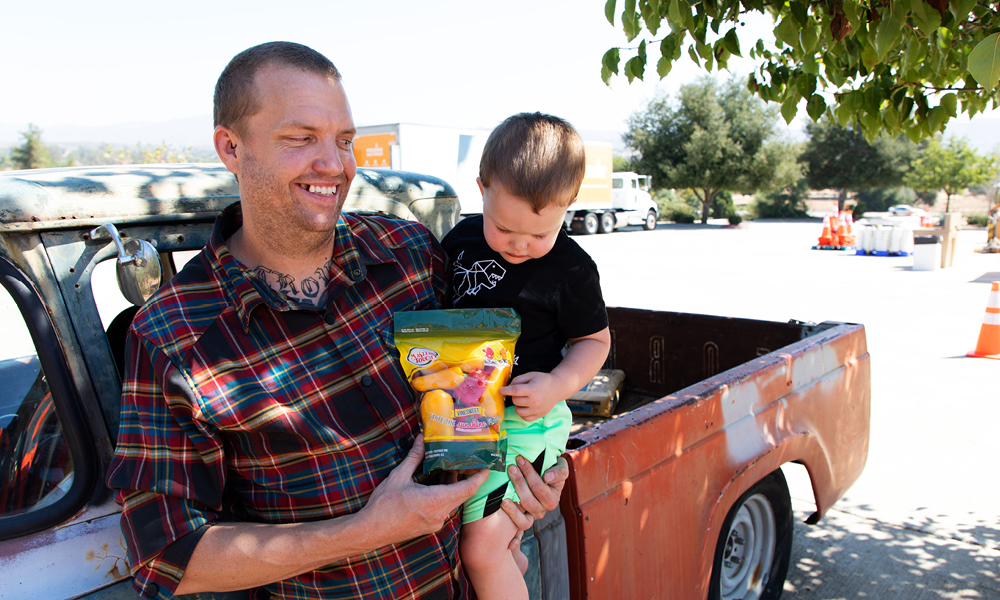
About the Review Process
Proposals will be reviewed and approved by SDF staff utilizing a rubric developed with input from Advisory Council members comprised of local food system leaders and based on relevance to the Community Food Grant Program criteria listed above.
Reviewers adhere to a strict conflict of interest policy and other internal controls to ensure that grant funding is distributed in an objective manner based on the merits of each proposal.
General
Program Design
Budget and Financials
Awarding
Glossary
Food Distribution
Sharing food among a group of recipients. This can be done by small retailers, farmers markets, restaurants, and distributors among others.
Food Environment (OR Community Food Environment)
The physical, economic, political, and socio-cultural conditions in which people access food within their community. These conditions impact and shape how people make decisions about food.
Food Insecurity
“The USDA defines food insecurity as a lack of consistent access to enough food for every person in a household to live an active, healthy life. This can be a temporary situation for a family or can last a long time. Food insecurity is one way we measure how many people can’t afford food.” (Feeding America)
Food Production
The act of growing food or raising fish or livestock.
Food Processing
Planning or preparing meals or providing the space for someone to do so. Food processing can take place at community kitchens, commercial kitchens, and food commissaries among other places.
Food Sovereignty
“Food sovereignty is the right of peoples to healthy and culturally appropriate food produced through ecologically sound and sustainable methods, and their right to define their own food and agriculture systems. It puts the aspirations and needs of those who produce, distribute and consume food at the heart of food systems and policies rather than the demands of markets and corporations.” –Declaration of Nyéléni, the first global forum on food sovereignty, Mali, 2007
Source: San Diego County Food Vision 2030
Questions?
If you have technical errors or need assistance with the online application, please contact FoodInitiatives@sdfoundation.org or call (619) 791-1766 and leave a message.
A prerecorded overview of the grant guidelines and application questions is available in English and Spanish. If you have a question that is not answered in the pre-recorded forum, submit your question online in English or Spanish.
